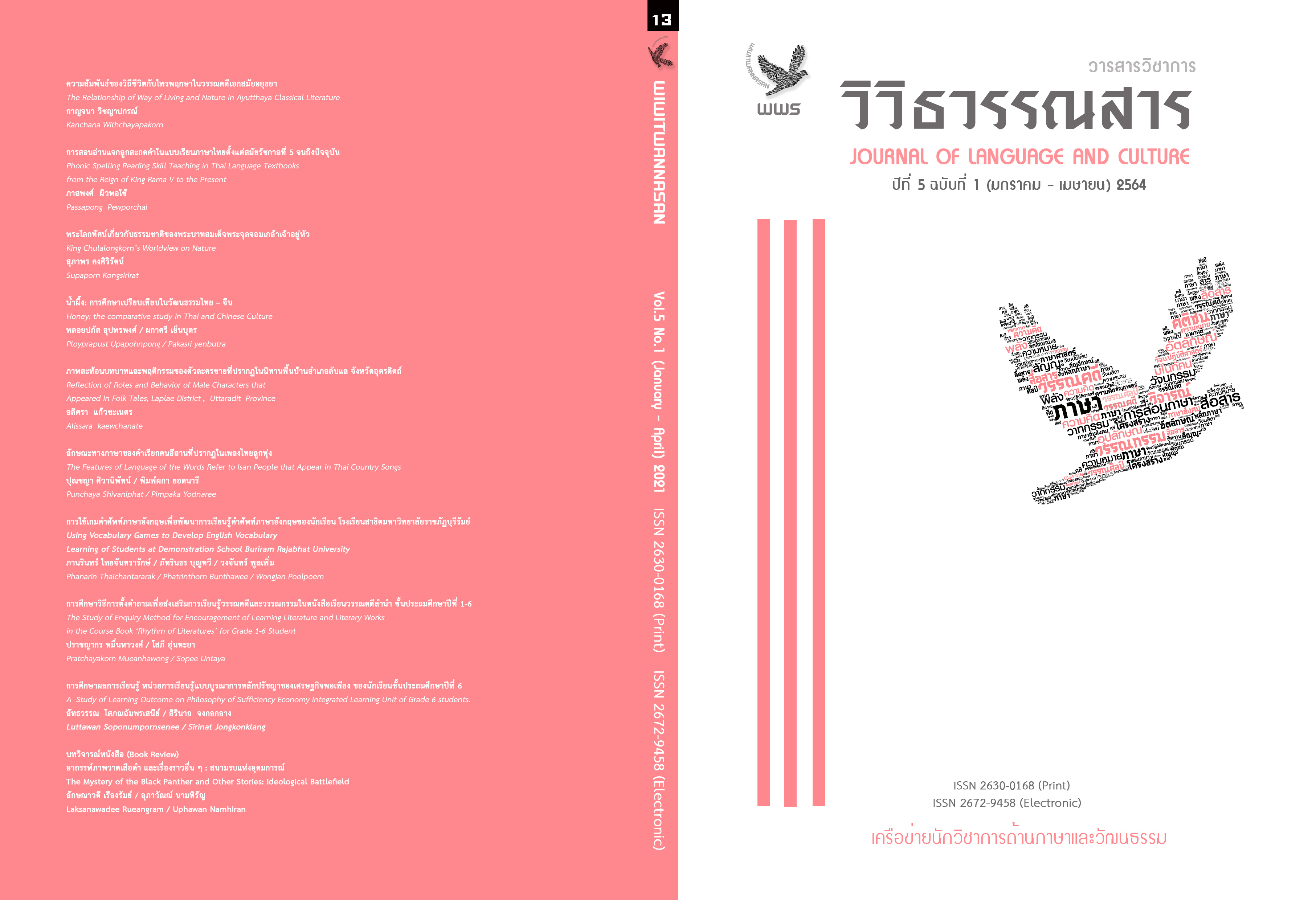Honey : the comparative study of teaching in Thai and Chinese Culture
Main Article Content
Abstract
The propose of this article was to study of the culture of honey used in Thai and Chinese society, by synthesis and analysis of data from the documents and research about honey used in Thai and Chinese Culture. According to the research finding, honey appeared in Thai and Chinese culture in several ways, such as language, agriculture, medical treatment, tradition, and history. Since Thai and China shared common geographical, religion, language, and cultural background, there was similar culture of using honey of Thai and China, for example; honey used as a part of idioms (language), lifeway of collecting honey in a forest (agriculture), honey used as an ingredient of medicine (medical), honey used as a part of traditions (tradition) and existence of several stories of honey (history).
Article Details
Copyright is that of the journal any reproduction must be permitted by the editor of journal
References
Dahlan, W. (2013). Karn phad wa doey nam phung. Nationweekend. 22 (1108) :71.
Department of Thai Traditional and Alternative Medicine. (2508). Ku meu kran chai sa moon phrai thai chen. (in Thai). Bangkok: The war Veterans organization of Thailand
Dhanvarajor, R. (1998). Karn suk sa kham nai si la cha ruk lak ti 1 khong phor khun ram kham hang. (in Thai). Bangkok: Thammasat University press.
Entomology and zoology society. (2004). Kae roy nam phung nai phra ted Thai. Kasertakam Thammachad. 8 (9): 39-41.
Historical society. (1978). Si la cha ruk su kho thai lak ti 2 cha ruk wat shi chum. (in Thai). Bangkok: BFI press.
Hongwiwat, T. (1999). Roo ti ma aharn aroi. (in Thai). Bangkok: Sangdad .
Khaolad, N. (1994). Sup ha sit lae kham pang paey. Bangkok: Sukaparbjai.
Kasetsiri, C. (2003). Ayatthaya. Bangkok: Toyota Foundation Thailand
King Phra Chom Klao Chao Yu hua. (2012). Phra ba rom ra cha nip hon nai rat cha karn ti 4 bot la korn reng ra ma kean. (in Thai). Nonthaburi: original press.
Panyananthapikhhu. (1993). Buddha biography. Bangkok: Thammasapa.
Paramanuchitchinorot. (1990). Wan na ka dee maha wed san dorn cha dok cha bab ted ma ha chard 13 kan. (in Thai). Bangkok: Monastery library Foundation Project.
Phasuphong, C. (2006). Phod ja na nu kom sam nuan thai - chen. (in Thai). Bangkok: Saisongsuksit.
Royal Institute. (2003). Royal Institute Dictionary year 1999. Bangkok: Nanmeebooks publication.
Sikkhakoson, T. (2014). Thed sa karn chen lae karn sen wai. (in Thai). Bangkok: Mitichon press.
Sor Plainoi. (2556). Reng rao chao krung kao. (in Thai). Bangkok: Satapornbooks.
Sor Suwan. (1991). Sam nuan chen. (in Thai). Bangkok: Sukhapabjai.
Tanmahaphran, C. (1995). Pa phay nee thong thin. (in Thai). Bangkok: Sangdad.
Udomporn, E. (2004). 2000 au pa ma au pa mai. (in Thai). Bangkok: Phattanasuksa.
Vajarodaya, K. (1999). Royal Chitralada Projects. (2nd Editional). n.p.
Wannawibool,B. (2009). nam phung tam sad phad phean chen. Thaihealthbook, 31 (360) : 23 - 24.


